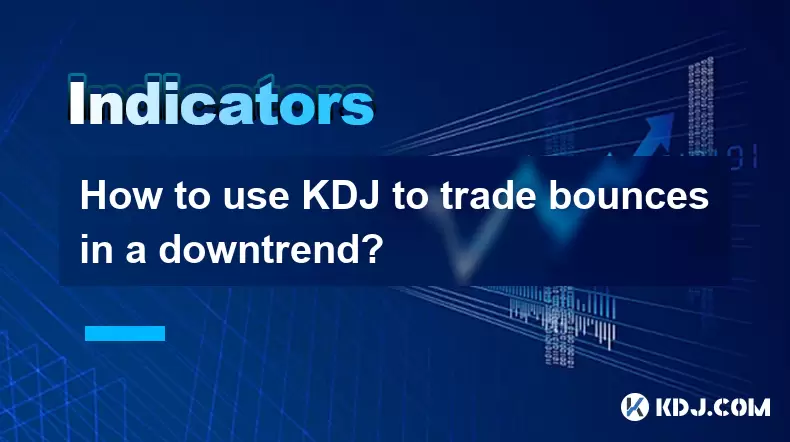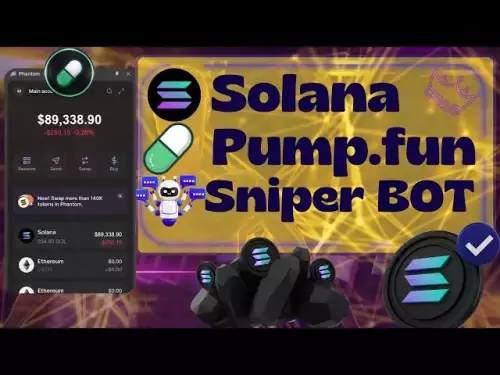-
 Bitcoin
Bitcoin $115100
-1.30% -
 Ethereum
Ethereum $4758
-1.70% -
 XRP
XRP $3.027
-2.19% -
 Tether USDt
Tether USDt $0.9998
-0.01% -
 BNB
BNB $883.2
-1.42% -
 Solana
Solana $204.0
2.62% -
 USDC
USDC $1.000
0.02% -
 Dogecoin
Dogecoin $0.2371
-0.97% -
 TRON
TRON $0.3612
-1.24% -
 Cardano
Cardano $0.9128
-2.19% -
 Chainlink
Chainlink $26.13
-3.93% -
 Hyperliquid
Hyperliquid $44.73
0.90% -
 Sui
Sui $3.715
-0.56% -
 Stellar
Stellar $0.4153
-2.41% -
 Ethena USDe
Ethena USDe $1.000
-0.04% -
 Bitcoin Cash
Bitcoin Cash $588.9
-2.06% -
 Avalanche
Avalanche $25.91
3.27% -
 Hedera
Hedera $0.2525
-1.45% -
 Litecoin
Litecoin $120.9
-1.35% -
 UNUS SED LEO
UNUS SED LEO $9.607
0.30% -
 Toncoin
Toncoin $3.382
-0.31% -
 Shiba Inu
Shiba Inu $0.00001329
-0.38% -
 Uniswap
Uniswap $11.38
-1.67% -
 Polkadot
Polkadot $4.222
2.83% -
 Aave
Aave $354.5
4.93% -
 Dai
Dai $0.0000
0.00% -
 Bitget Token
Bitget Token $4.704
-1.49% -
 Cronos
Cronos $0.1565
1.83% -
 Ethena
Ethena $0.7463
1.55% -
 Monero
Monero $265.8
-0.39%
How to use KDJ to trade bounces in a downtrend?
The KDJ indicator helps spot short-term bounces in downtrends by identifying oversold conditions below 20, with confirmation from %K/%D crossovers and bullish price patterns.
Aug 13, 2025 at 11:36 am

Understanding KDJ and Its Components in Downtrend Analysis
The KDJ indicator is a momentum oscillator derived from the Stochastic Oscillator, widely used in cryptocurrency trading to identify potential reversal points. It consists of three lines: %K, %D, and %J. The %K line reflects the current closing price relative to the price range over a specified period, typically 9 periods. The %D line is a moving average of %K, usually a 3-period simple moving average, making it smoother. The %J line is calculated as 3 × %K – 2 × %D, which makes it more sensitive and volatile. In a downtrend, traders use the KDJ to detect oversold conditions where a temporary bounce might occur. When the %K and %D lines fall below 20, the market is considered oversold, signaling a potential upward correction.
Identifying Downtrends Using Price Action and KDJ
Before attempting to trade bounces, it is essential to confirm the presence of a downtrend. This can be established by observing lower highs and lower lows on the price chart. Use tools like trendlines or moving averages (e.g., 50-period and 200-period EMA) to validate the bearish trend. Once the downtrend is confirmed, overlay the KDJ indicator on the chart. Look for instances where the %K and %D lines enter the oversold zone (below 20). However, entering a trade solely based on oversold readings is risky in a strong downtrend. The key is to wait for a KDJ crossover — when the %K line crosses above the %D line — within the oversold area. This crossover increases the probability of a short-term bounce.
Setting Up KDJ Parameters for Cryptocurrency Trading
Most trading platforms default to a KDJ setting of 9, 3, 3, meaning a 9-period lookback, a 3-period smoothing for %D, and a 3-period calculation for %J. For cryptocurrency markets, which are highly volatile, adjusting these settings can improve signal accuracy. Consider using 14, 3, 3 for a slightly smoother response on higher timeframes like the 4-hour or daily chart. On lower timeframes such as 15-minute or 1-hour, the standard 9, 3, 3 may be more responsive. Ensure your trading platform (e.g., Binance, TradingView) has the KDJ indicator available. If not, you can manually add it via the indicator library. Navigate to the chart settings, select "Indicators," search for "KDJ," and apply it. Verify that all three lines (%K, %D, %J) are visible and properly labeled.
Executing a Trade Based on KDJ Bounce Signals
When the price is in a confirmed downtrend and the KDJ shows an oversold condition with a %K/%D crossover below 20, prepare for a potential long position. The entry should not be immediate. Wait for price confirmation, such as a bullish candlestick pattern (e.g., hammer, bullish engulfing) at a key support level or Fibonacci retracement zone. Once confirmed:
- Enter the trade at the close of the confirming candle.
- Place a stop-loss just below the recent swing low to limit downside risk.
- Set a take-profit level at the nearest resistance, such as a previous swing high or a descending trendline.
- Monitor the %J line; if it rapidly rises above 80, the bounce may be overextended, signaling an early exit.
Use a risk-reward ratio of at least 1:2 to ensure profitability over time. For example, if your stop-loss is 2% below entry, aim for a 4% gain.
Filtering False Signals with Volume and RSI
KDJ signals in a downtrend can produce false bounces, especially during strong bearish momentum. To improve accuracy, combine KDJ with volume analysis and the Relative Strength Index (RSI). Check if the volume decreases during the downward move into the oversold zone — this suggests weakening selling pressure. A sudden spike in volume on the bounce candle supports the reversal signal. Additionally, use RSI set to the same period as KDJ. If RSI is also below 30 and begins to rise, it confirms oversold conditions. Only take the trade when both KDJ and RSI show bullish divergence — price makes a lower low, but the indicator makes a higher low. This confluence increases the reliability of the bounce signal.
Managing Position Size and Trade Psychology
Trading bounces in a downtrend is inherently risky because the overall trend remains bearish. Therefore, position sizing is critical. Allocate no more than 1-2% of your trading capital per bounce trade. Use a trailing stop to lock in profits if the bounce extends beyond the initial target. Avoid emotional decisions; do not hold the position hoping for a full trend reversal unless new evidence emerges. Remember, this strategy targets short-term corrections, not bottom picking. Stick to the plan: enter on confirmed KDJ crossovers in oversold zones, exit at resistance, and preserve capital for higher-probability setups.
Frequently Asked Questions
Can KDJ be used on all cryptocurrency pairs?
Yes, KDJ can be applied to any cryptocurrency pair, including BTC/USDT, ETH/USDT, and altcoin pairs. However, liquidity and volatility vary. Major pairs with high volume (e.g., BTC, ETH) tend to produce more reliable KDJ signals. Low-volume altcoins may generate frequent false signals due to price manipulation or thin order books. Always assess the trading volume and market depth before relying on KDJ readings.
What timeframes work best for KDJ bounce trading?
The 1-hour and 4-hour charts are optimal for KDJ bounce strategies. These timeframes balance signal frequency and reliability. Lower timeframes (e.g., 5-minute) produce too many noisy signals, while daily charts may miss short-term bounces. For swing trades, use the 4-hour chart with KDJ (9,3,3) and confirm with daily trend structure.
How do I know if a KDJ crossover is a trap?
A KDJ crossover in a strong downtrend can be a trap if price fails to move upward after the signal. Watch for lack of follow-through: if the next 1-2 candles close lower or volume remains high on down moves, the bounce has likely failed. Also, if the %K line quickly re-crosses below %D after the initial signal, exit immediately.
Should I use leverage when trading KDJ bounces?
It is not advisable to use high leverage for bounce trades in downtrends. These are counter-trend plays with limited upside and high risk. Leverage amplifies losses if the downtrend resumes. If used at all, keep leverage at 2x or lower and ensure strict stop-loss placement.
Disclaimer:info@kdj.com
The information provided is not trading advice. kdj.com does not assume any responsibility for any investments made based on the information provided in this article. Cryptocurrencies are highly volatile and it is highly recommended that you invest with caution after thorough research!
If you believe that the content used on this website infringes your copyright, please contact us immediately (info@kdj.com) and we will delete it promptly.
- Whitelist Frenzy: Is This the Top Meme Coin of 2025?
- 2025-08-24 08:45:22
- Ruvi AI: The AI Token Igniting a Cardano-esque Rally?
- 2025-08-24 07:45:12
- Altcoins in a Market Dip: Is Polygon (MATIC) Poised for a Reversal?
- 2025-08-24 07:05:13
- Crypto, Pepe, and Investment: Navigating the Meme Coin Mania in 2025
- 2025-08-24 06:45:29
- VanEck's JitoSOL ETF: A New Era for Solana and Institutional Crypto
- 2025-08-24 07:45:12
- Dogecoin, Shiba Inu, and the Rise of New Crypto Contenders
- 2025-08-24 08:05:30
Related knowledge

What does it mean when the +DI and -DI cross frequently in the DMI indicator but the ADX is flattening?
Aug 11,2025 at 03:15am
Understanding the DMI Indicator ComponentsThe Directional Movement Index (DMI) is a technical analysis tool composed of three lines: the +DI (Positive...

What does the sudden appearance of a "dark cloud cover" candlestick pattern during an uptrend indicate?
Aug 13,2025 at 11:35am
Understanding the 'Dark Cloud Cover' Candlestick PatternThe dark cloud cover is a bearish reversal pattern in technical analysis that typically appear...

What does it mean when the moving average, MACD, and RSI all send buy signals simultaneously?
Aug 11,2025 at 01:42pm
Understanding the Convergence of Technical IndicatorsWhen the moving average, MACD, and RSI all generate buy signals at the same time, traders interpr...

What does it mean when both the KDJ indicator and the RSI show overbought signals simultaneously?
Aug 13,2025 at 11:35am
Understanding the KDJ Indicator in Cryptocurrency TradingThe KDJ indicator is a momentum oscillator derived from the Stochastic Oscillator, widely use...

What does it mean when the price is trading above the SAR indicator but the red dots are densely packed?
Aug 09,2025 at 11:49pm
Understanding the SAR Indicator and Its Visual SignalsThe SAR (Parabolic Stop and Reverse) indicator is a technical analysis tool used primarily to de...

What does it mean when the candlestick chart forms a "Morning Star" but trading volume is sluggish?
Aug 12,2025 at 06:28pm
Understanding the Morning Star Candlestick PatternThe Morning Star is a three-candle bullish reversal pattern commonly observed in cryptocurrency pric...

What does it mean when the +DI and -DI cross frequently in the DMI indicator but the ADX is flattening?
Aug 11,2025 at 03:15am
Understanding the DMI Indicator ComponentsThe Directional Movement Index (DMI) is a technical analysis tool composed of three lines: the +DI (Positive...

What does the sudden appearance of a "dark cloud cover" candlestick pattern during an uptrend indicate?
Aug 13,2025 at 11:35am
Understanding the 'Dark Cloud Cover' Candlestick PatternThe dark cloud cover is a bearish reversal pattern in technical analysis that typically appear...

What does it mean when the moving average, MACD, and RSI all send buy signals simultaneously?
Aug 11,2025 at 01:42pm
Understanding the Convergence of Technical IndicatorsWhen the moving average, MACD, and RSI all generate buy signals at the same time, traders interpr...

What does it mean when both the KDJ indicator and the RSI show overbought signals simultaneously?
Aug 13,2025 at 11:35am
Understanding the KDJ Indicator in Cryptocurrency TradingThe KDJ indicator is a momentum oscillator derived from the Stochastic Oscillator, widely use...

What does it mean when the price is trading above the SAR indicator but the red dots are densely packed?
Aug 09,2025 at 11:49pm
Understanding the SAR Indicator and Its Visual SignalsThe SAR (Parabolic Stop and Reverse) indicator is a technical analysis tool used primarily to de...

What does it mean when the candlestick chart forms a "Morning Star" but trading volume is sluggish?
Aug 12,2025 at 06:28pm
Understanding the Morning Star Candlestick PatternThe Morning Star is a three-candle bullish reversal pattern commonly observed in cryptocurrency pric...
See all articles

























































































